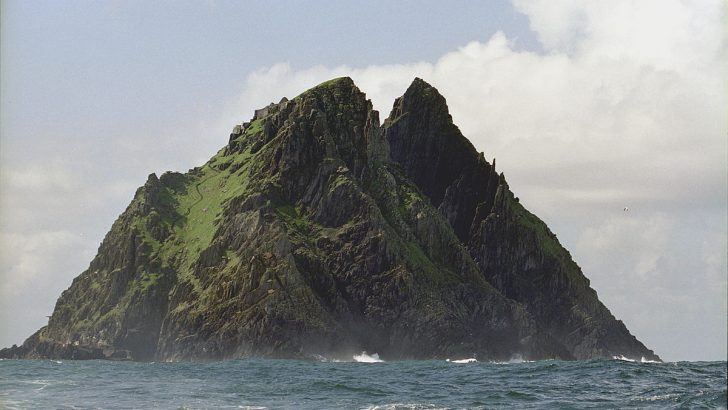Returning Light: 30 Years of Life on Skellig Michael by Robert L. Harris (Harper Collins Ireland, €13.99 / £14.99)
This is a tale about a remarkable location, a remarkable monastery and a remarkable person.
The remarkable location consists of two huge pinnacles of rock reaching skywards from the sea-bed of the North Atlantic 11 and a half kilometres west of the coast of Co. Kerry. The larger one is known as the Great Skellig, the other one as the Little Skellig. Since the 10th Century the Great Skellig has also been known as Skellig Michael (Sceilig Mhichíl) after a monastery which had been sited on it. Skellig Michael is 540 acres of rock with twin peaks. The two Skelligs are home to colonies of a wide variety of birds. They make their nests, lay their eggs and raise their chicks in the crevices of the rock. Ornithologists estimate that at any one time more than 500 puffins alone can be over Skellig Michael as they fly in and out of their nests.
From May to early October the pier on Skellig Michael is accessible. The visitor then finds three sets of stairs leading to the summit of the island. One leads directly to a ghost monastery. Here on a man-made platform is a ruined medieval chapel, and in a circle, six beehive cells and two oratories. In the centre of the compound is a High Cross. Nearby is a small graveyard with a row of small crosses. There are also patches of ground suitable for cultivation and cisterns for retaining rain-water. And, apart from this little walled monastery, there is evidence of hermitages on other terraces nearby.
Legend
Skellig Michael’s monastery features in legends and there are references to it in the Annals of the Four Masters. It seems that the ‘King of the World’ visited it and a Norwegian King was baptised on it. It is claimed that the Vikings attacked it and kidnapped the abbot Eitgal in the 9th Century. St Michael on one occasion was alleged to have changed water into wine to enable the monks to celebrate Mass. Regrettably, no information about the monks and their monastery which would satisfy a professional historian has survived. Hence one is left with only the ‘educated guess’ that the monastery existed here from the sixth to the 12th Century.
Thesis
The author, Robert L. Harris, travelled from the US on a scholarship to Edinburgh University to complete a post-graduate thesis. While exploring the Western Isles of Scotland, including Iona, he met Landscape Artist and Native of Killarney, Maighréad, who was eventually to be his wife. She introduced him to Skellig Michael in 1987. Within a week he was appointed by Kerry County Council to supervise the island’s maintenance and the guiding of visitors to it. From 1987 to 2019 he spent half of each year between Skellig Michael and his home in North Leitrim.
In his memoir, apart from exhibiting his penchant for monastic and natural history, Harris’s love for people is apparent. During his stewardship there were more than 100,000 visitors to Skellig Michael.
Learn
He communicated with many of them and learned the profound effect the climb to the ‘monastery on high’ had on them. Sadly, he also records that three visitors died on the island. Harris reserves his highest praise for Dermot Walsh, coxswain of Valentia Lifeboat who, in his Agnes Oilibhear, ferried people between Portmagee and Skellig Michael and he recalls with gratitude the camaraderie of custodians of the lighthouse during inclement weather.
Every page evinces Harris’ love affair with the bird-life of the island. He recalls some of the extraordinary interactions he had with individual birds, mainly puffins. His fascination with the light as it streamed into different parts of the islands at different times and seasons prompts him to become at times lyrical and break into poetry.
Like its author this memoir is also truly remarkable.



